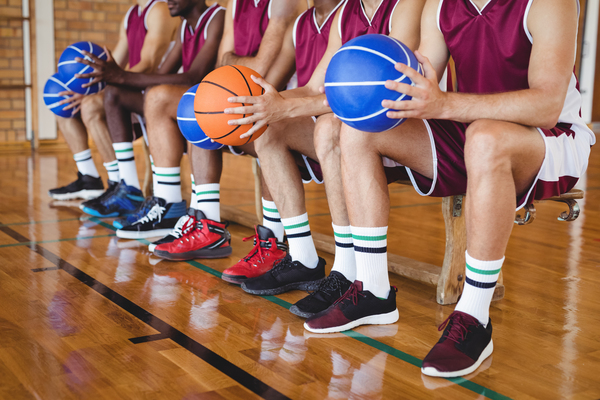Kevin Garnett, Kobe Bryant, LeBron James – these are just some famous figures in basketball who went straight to the NBA without going to college. Since 2005, however, at least 1 year has passed between leaving school and the NBA, so many young alumni players are now back in the NCAA.
Alumni can choose from nearly 2,000 college basketball teams organized into different associations. The NCAA Division I is particularly well-known, with 351 teams and almost 5,500 male athletes. All colleges in the NCAA Division I offer up to 13 scholarships (“scholarships”). Those players who do not receive a stipend are referred to as “walk-ons”.

What is the NCAA Division I?
Although the NCAA already has the best 351 of around 2,000 college teams and the 32 conferences in which they are organized. The exact allocation of the 32 conferences into these three categories differs depending on the definition and point of view, and in some years classic “mid-major” leagues can be stronger than individual “high-major” leagues. Nevertheless, the map of NCAA Division I should be illustrated using this rough breakdown.
Due to the heterogeneity of the teams, there is considerable scope for decision-making here. The main aim is to make the quality of victories and defeats comparable. An important key figure is, for example, the strength of the game plan, which is intended to assess how difficult a team has put together its “non-conference schedule” and how strong its conference was.
Are alumni united in Power Five?
According to Kansas City Stars High school basketball, there is the so-called “Power Five” that clearly deserve the seal “high-major” in terms of strength and attention: the Atlantic Coast Conference (ACC) with a focus on the east of the country, the Big Ten Conference (Big Ten) in the Midwest, the Big-12 Conference (Big-12) in the South and Central United States, the Pacific-12 Conference (Pac-12) in the West, and the Southeastern Conference (SEC) in the Southeast. They regularly attract the best players, the most fans, the highest paying sponsors and media partners, and educate the NBA players.